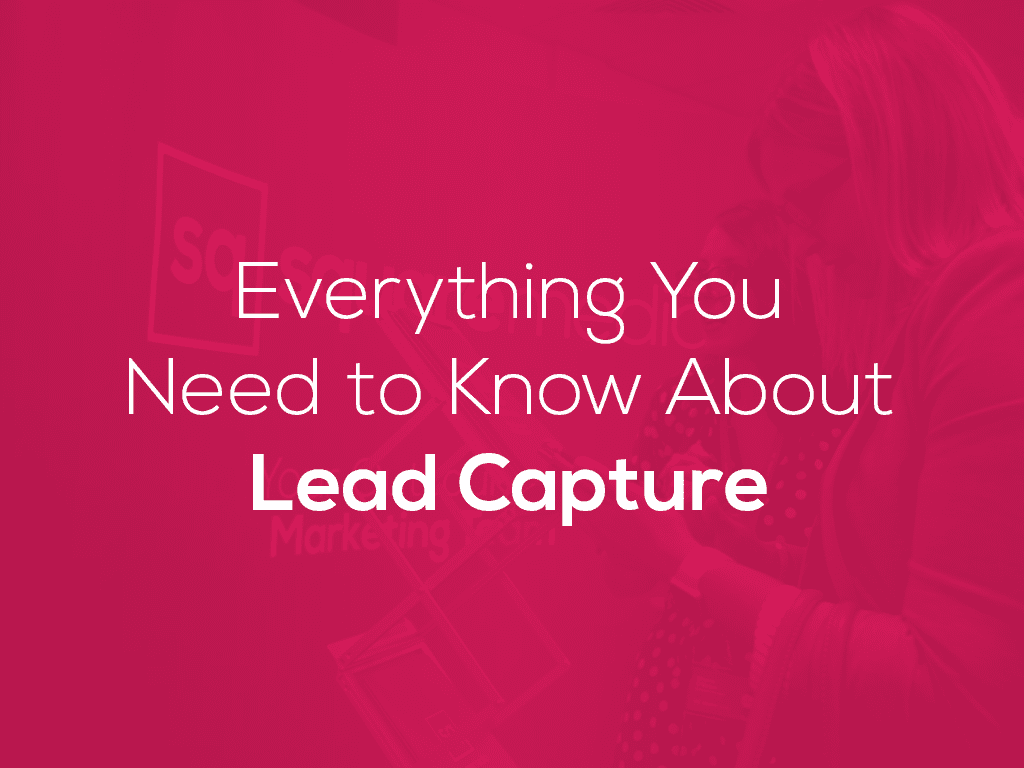
An Introduction to Lead Capture
Lead capture is an important part of digital marketing because it provides you with the data you need to market to new prospects. Read on to find out the basics of lead capture and how you can add these principles to your marketing strategy.
What is lead capture?
Lead capture is the process of obtaining personal information from a potential lead who has visited your website with the aim of converting them into a paying customer.
What information should you collect?
The information you may want to obtain from the visitor is their name and email address as a minimum. Depending on the nature of your business, you may also want to ask for their phone number. You could also ask for additional information such as what the user is interested in or what their needs are in relation to your product or service. This could help you to segment your mailing lists when it comes to email remarketing, ensuring you are sending the most relevant information to each lead. The information you ask for may also depend on why you are gathering leads, for example if you are running a specific campaign – so always start with your “why” when you’re planning your lead generation activities.
However, there may be some fields you would like to make optional in case people are happy to provide some types of information but not others. For example, if in your sign-up form you ask for the visitor’s name, email address and phone number and they must fill in all fields in order to submit the form, this may prevent some users from filling out the form at all even if they would have otherwise supplied their name and email address if given the option. Or it could result in people providing fake phone numbers so the form will submit, which could cause problems when it comes to following up with those leads. It’s a good idea to only ask for the information you really need, or to make some fields optional, especially as users will be turned off by long forms.
Why should you gather information from potential leads?
It is important to gather information from potential customers so that you can contact them again in the future. 50% of people who go to your website won’t revisit your website, so you need to remind them who you are and what you offer more proactively rather than waiting for them to come back to you.
How can you convince customers to give you their information?
The most effective way to get information out of people is to offer them something in return. However, you need to make sure that it is realistic, as if it is a big offer, people may think it’s too good to be true. Some common resources businesses often offer are e-books, cheat sheets, help guides or free product demos.
What methods can you use to capture leads?
As well as offering free resources, you can also capture lead information through newsletter sign-up forms and contact forms. Chatbots are a newer method of communicating with customers that can also offer you an opportunity for gathering data.
However you decide to capture leads, keep GDPR in mind and ensure users can opt in or out so they have agreed to you using their data for marketing purposes.
How can you remarket to your leads?
A great way to get in touch with your newly gathered leads is via email. Email remarketing is when you send your leads emails to remind them you still exist. This is one way to increase your chances of getting a sale after they’ve visited your website, especially if you offer them something new, such as a percentage off their order. You could also add your leads to your regular newsletter list, send out one-off mailshots based on their interests or activities. You could also set up automated workflows that send out automated emails based on the user’s activity. For example, if you send them an e-book and they open it, you could send them subsequent emails about blog posts or buying guides, pushing the user further down the sales funnel to eventually prompt them to make a purchase. Again, exactly how this is done and the content that is offered will depend on the nature of your business.
Whatever information you ask your leads for and however you decide to market to them, it’s essential to ensure everything you do is within the GDPR.
If you would like help with lead capture or remarketing, book a consultancy with our Marketing and Sales Director, Steve Rees.

